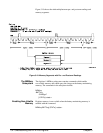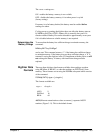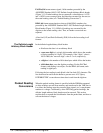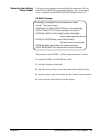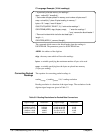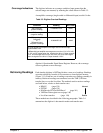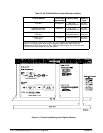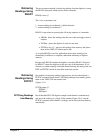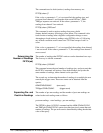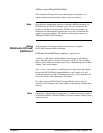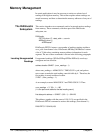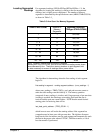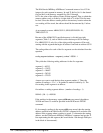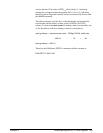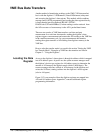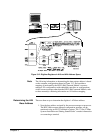
The commands used to fetch (retrieve) readings from memory are:
FETCh[<
chan
>]?
If the <chan > parameter is ’1’ or is not specified, the readings (pre- and
post-arm) from channel 1 and from the most recent INITiate - ARM -
TRIGger sequence are retrieved. If the <chan > parameter is ’2’, the
readings from channel 2 are retrieved.
FETCh[<
chan
>]:RECover?
This command is used to retrieve readings from non-volatile
(battery-backed) memory following a power failure. The command is also
used to retrieve readings after a digitizer configuration change or reset.
Attempting to fetch (retrieve) readings using FETCh[<chan >]? following
any of these conditions would cause error 230 "Data corrupt or stale" to
occur.
If the <chan > parameter is ’1’ or is not specified, the readings from channel
1 are recovered. If the <chan > parameter is ’2’, the readings from channel 2
are recovered.
Determining the
Number of Readings
FETCh(ed)
The number of readings that FETCh? retrieves can be determined two ways.
The first way is with the command:
FETCh[<
chan
>]:COUNt?
This command returns the total number of readings (pre- and post-arm) that
the FETCh? command will retrieve. Since both channels always take the
same number of readings, either channel can be specified.
The second way to determine the number of readings is to multiply the arm
count by the trigger count. These two counts can be obtained from the
queries:
ARM:STARt:COUNt? (arm count)
TRIGger:STARt:COUNt? (trigger count)
Separating Pre- and
Post-Arm Readings
The number of pre-arm readings and the number of post-arm readings are
related to the total reading count as follows:
post-arm readings = total readings - pre-arm readings
The FETCh[< chan >]:COUNt? command and the ARM:STARt:COUNt?
and TRIGger:STARt:COUNt? queries described previously return the total
number of readings. The pre-arm count is determined by taking the absolute
value of the query:
140 Understandin
g
the HP E1429 Di
g
itizer Chapter 3



